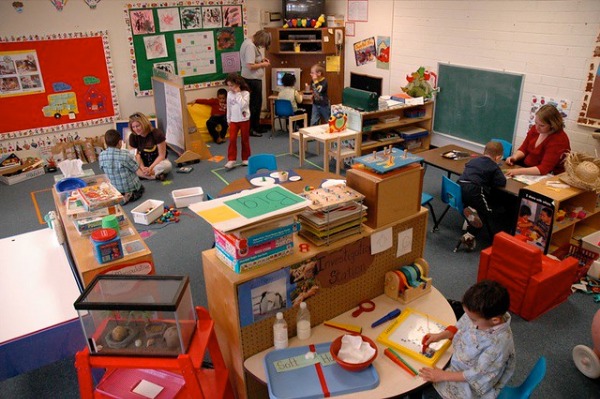Kindergarten Comes to America
In 1873, the St. Louis, Missouri, school board authorized the first public kindergarten in the United States. We take the idea of kindergarten and pre-school education for granted today, but the concept was not only foreign but radical then.
Friedrich Froebel had developed what he called a “kindergarten” (garden of children) in Germany in which teachers acted as the “gardeners.” Teachers would provide the environment and the resources to nourish the minds of the children and stand back and let them grow.
I consider this an early effort in learning space design. The classrooms were bright and colorful with "stations" around the room for different activities. Some schools also provided easy access to outdoor play areas. The classroom had kid-sized tables and benches - an idea that seems so logical but had not been used earlier.
Of course, the kindergarten concept included more than just the physical space, but the learning space was considered a far more important part of the learning process than it was in the other grades.
In the U.S., Susan Blow was the driving force behind the kindergarten movement. She visited Germany after the American Civil War and was impressed by Froebel’s kindergartens. The idea that children were learning language, math, and science concepts through play was a radical idea.
When she returned home, she made a study of the kindergarten concept. She wrote that “If we can make children love intellectual effort, we shall prolong habits of study beyond school years.” Her father was able to get the St. Louis school superintendent to open an experimental kindergarten. He agreed and sent Susan Blow to New York to study for a year.
Susan offered to direct the kindergarten for free if the school board would provide her with classroom space and a teacher. She ended up being the director for eleven years, at her own expense. She retired in 1884 when the St. Louis schools had 9,000 kindergartners. She died in 1916 at which point the success of the kindergarten experiment had led it to be introduced in more than 400 American cities.

 The new semester is starting at most American colleges and I'm thinking about the silos on campuses. I don't mean anything having to do with agricultural programs which probably have a silo or two. I mean the figurative silos that are still quite real that appear in departments and schools on campus.
The new semester is starting at most American colleges and I'm thinking about the silos on campuses. I don't mean anything having to do with agricultural programs which probably have a silo or two. I mean the figurative silos that are still quite real that appear in departments and schools on campus. I retired a few years ago and then I unretired about a year later. I took on some part-time work and then I signed a one-year contract for some consulting. That runs out at the end of August and though I have no plans to do any steady work in the future, I plan to still do some consulting and design work. That work is very part-time and very selective on my part.
I retired a few years ago and then I unretired about a year later. I took on some part-time work and then I signed a one-year contract for some consulting. That runs out at the end of August and though I have no plans to do any steady work in the future, I plan to still do some consulting and design work. That work is very part-time and very selective on my part.